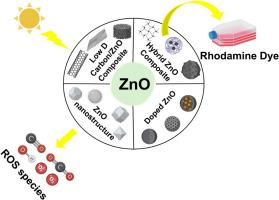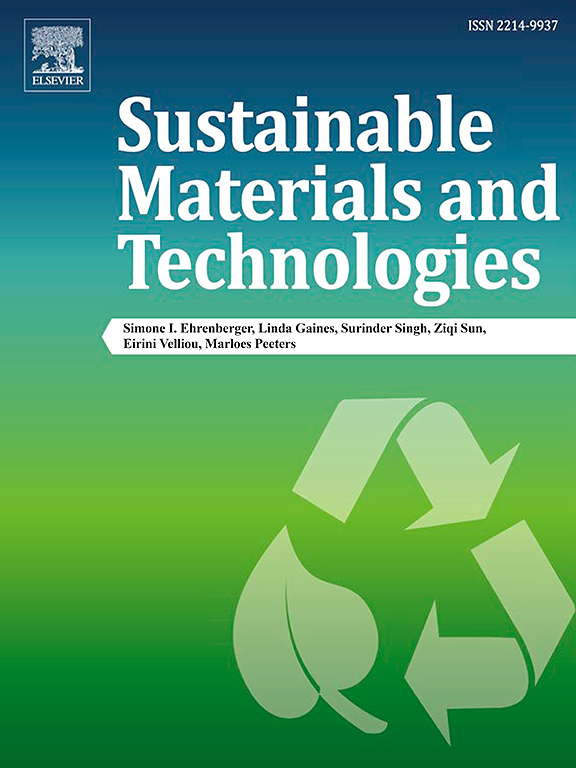基于氧化锌的光催化剂在有效去除水中罗丹明染料方面取得的进展
IF 8.6
2区 工程技术
Q1 ENERGY & FUELS
引用次数: 0
摘要
工业、人口和城市文化的不断增长加剧了有害有机染料污染水质这一全球性挑战。罗丹明是一种有毒染料,对人类健康构成严重威胁,因此促使人们广泛研究如何从废水中去除罗丹明。纳米结构 ZnO 因其优异的性能和更高的表面反应速度,成为处理此类有害着色剂的一种前景广阔的光催化剂。这篇综述文章全面研究了过去几十年中各种基于氧化锌纳米材料的催化剂对罗丹明染料的光催化去除作用。主要目的是研究不同的合成技术和对氧化锌的改性(包括掺杂金属离子、碳和硫,或与各种低维碳材料、金属氧化物、金属硫化物和聚合物形成复合材料)所产生的影响。通过利用 ZnO 纳米材料更好的光催化性能,这些策略被用来提高废水中罗丹明染料的修复效果。本综述深入探讨了近期的文献报告,重点介绍了针对关键挑战的观察结果和主要发现,并概述了基于氧化锌的光催化剂在罗丹明染料修复中的应用前景。显而易见,不断改进合成方法和优化氧化锌光催化剂的异质结对于提高罗丹明染料的去除效率和创造更清洁、更环保的环境至关重要。本文章由计算机程序翻译,如有差异,请以英文原文为准。

Advancements in ZnO-based photocatalysts for effective rhodamine dye removal from water
The escalating growth of industries, population, and urban culture has exacerbated the global challenge of contaminated water due to hazardous organic dyes. One such noxious dye, rhodamine, poses a significant threat to human health and has consequently prompted extensive research into its removal from wastewater. Nanostructured ZnO emerges as a promising photocatalyst for tackling such hazardous colorants, owing to its exceptional performance and heightened surface reactivity. This review article comprehensively examines the photocatalytic removal of rhodamine dye by various ZnO nanomaterial-based catalysts over the past few decades. The primary objective is to investigate the impact of different synthesis techniques and modifications of ZnO, including doping with metal ions, carbon, and sulfur, or the creation of composites with various low-dimensional carbon materials, metal oxides, metal sulfides, and polymers. These strategies have been explored to enhance the efficacy of rhodamine dye remediation from wastewater by harnessing the improved photocatalytic performance of ZnO nanomaterials. The review delves into recent literature reports, highlighting observed results and key findings addressing critical challenges and outlines prospects for ZnO-based photocatalysts in rhodamine dye remediation. It becomes evident that evolving synthesis methods and optimizing the heterojunction of ZnO photocatalysts are essential for advancing the efficacy of rhodamine dye removal and contributing to the creation of a cleaner and greener environment.
求助全文
通过发布文献求助,成功后即可免费获取论文全文。
去求助
来源期刊

Sustainable Materials and Technologies
Energy-Renewable Energy, Sustainability and the Environment
CiteScore
13.40
自引率
4.20%
发文量
158
审稿时长
45 days
期刊介绍:
Sustainable Materials and Technologies (SM&T), an international, cross-disciplinary, fully open access journal published by Elsevier, focuses on original full-length research articles and reviews. It covers applied or fundamental science of nano-, micro-, meso-, and macro-scale aspects of materials and technologies for sustainable development. SM&T gives special attention to contributions that bridge the knowledge gap between materials and system designs.
 求助内容:
求助内容: 应助结果提醒方式:
应助结果提醒方式:


